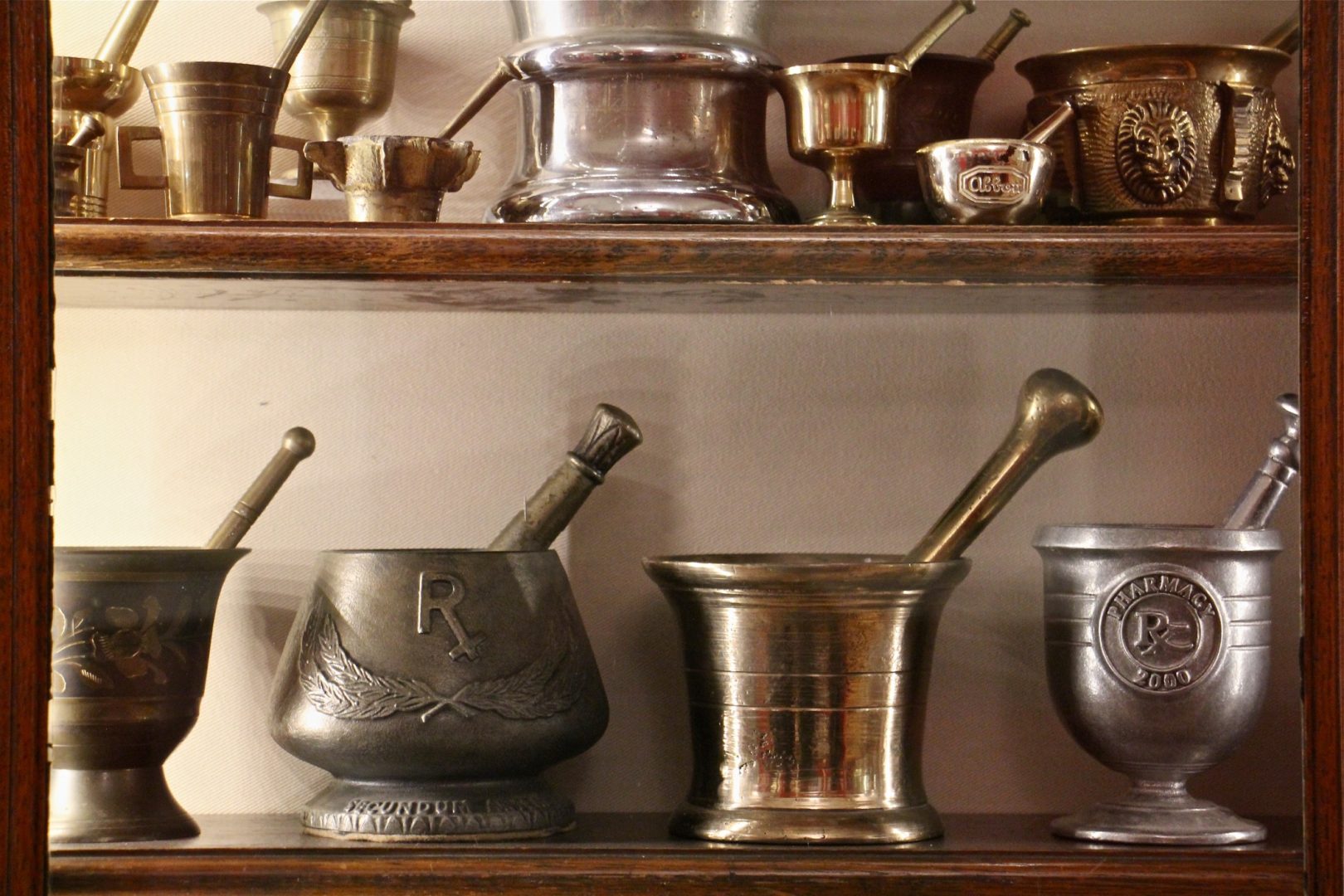
The collection at the Samson Center contains hundreds of mortar and pestle sets.
Emma Lee / WHYY

The collection at the Samson Center contains hundreds of mortar and pestle sets.
Emma Lee / WHYY

Emma Lee / WHYY
The collection at the Samson Center contains hundreds of mortar and pestle sets.
(Philadelphia) — Just as America’s Founding Fathers met in Carpenters’ Hall in 1774 to discuss what an American nation might look like, 68 pharmacists gathered in the same place in 1821 to talk about what the future of American pharmacy would look like.
They created the Philadelphia College of Pharmacy, now the University of the Sciences. It’s now gearing up for its bicentennial. After 200 years of collecting things related to the science and business of pharmacology, the university is not quite sure what it has.
Tucked into a back room of one of the campus buildings is a picker’s delight, a mad jumble of druggist shop cabinetry, ornate apothecary jars, vintage colored glass spheres, a hand-cranked static electricity generator, a cabinet full of mid-century grooming products, and a cat-sized skeleton posed on a tree branch.
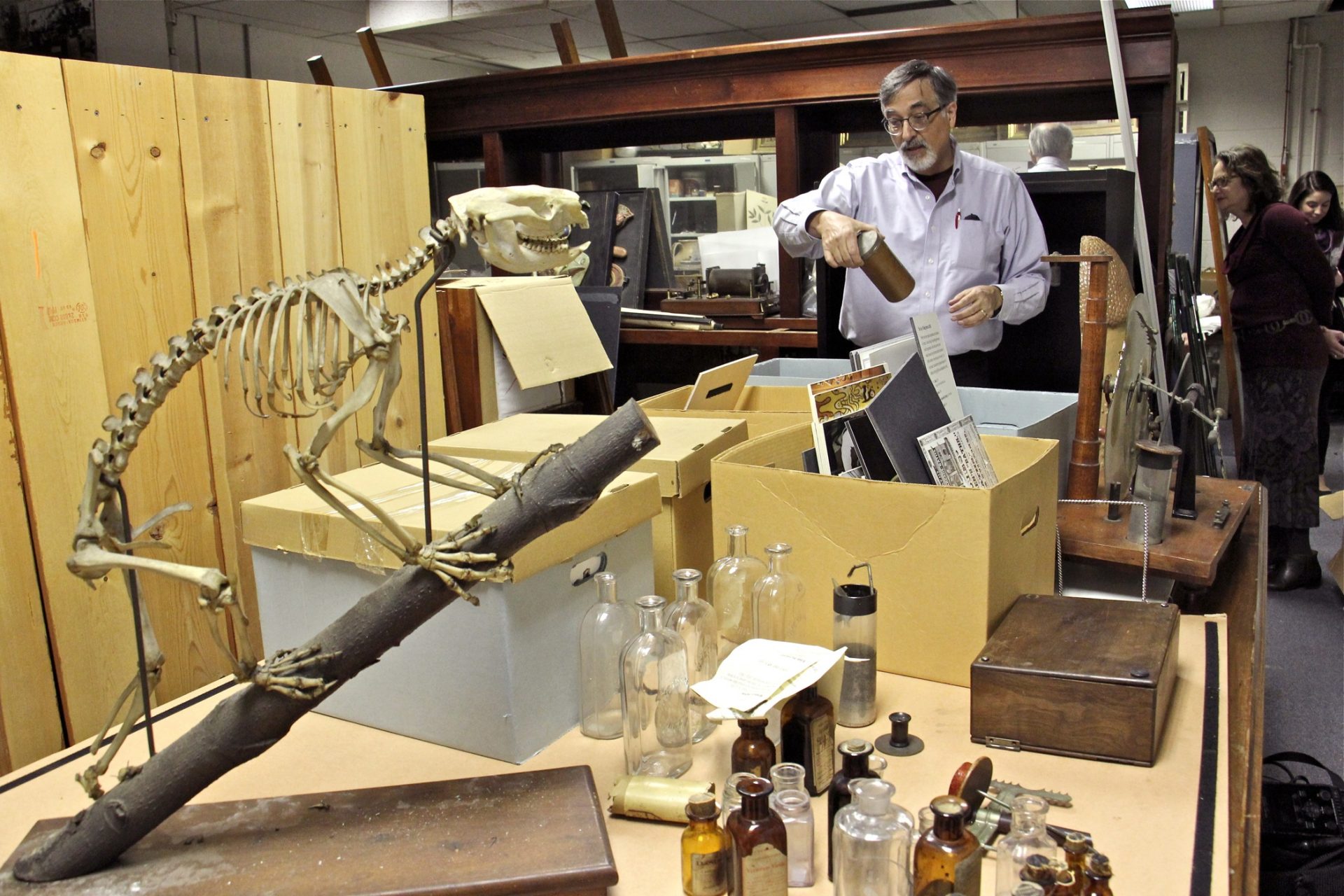
Emma Lee / WHYY
Pharmacy historian Greg Higby sorts through the treasures in a storeroom at the University of the Sciences. (Emma Lee/WHYY)
There are long spindles that look like a gyro rotisserie, but they are actually compressed stacks of tens of thousands of old prescriptions. They’re called pharmacy snakes.
“There is a strong collecting instinct among pharmacists,” said Robert Rudd, the university’s vice president of advancement. “There’s a fair amount of material that just showed up at the University and we’re entirely unclear on what it is and what it came from.”
To mark the university’s 200th year, Rudd brought in a hired gun: historian Gregory Higby, the former director of the American Institute of the History of Pharmacy, based in Madison, Wis.
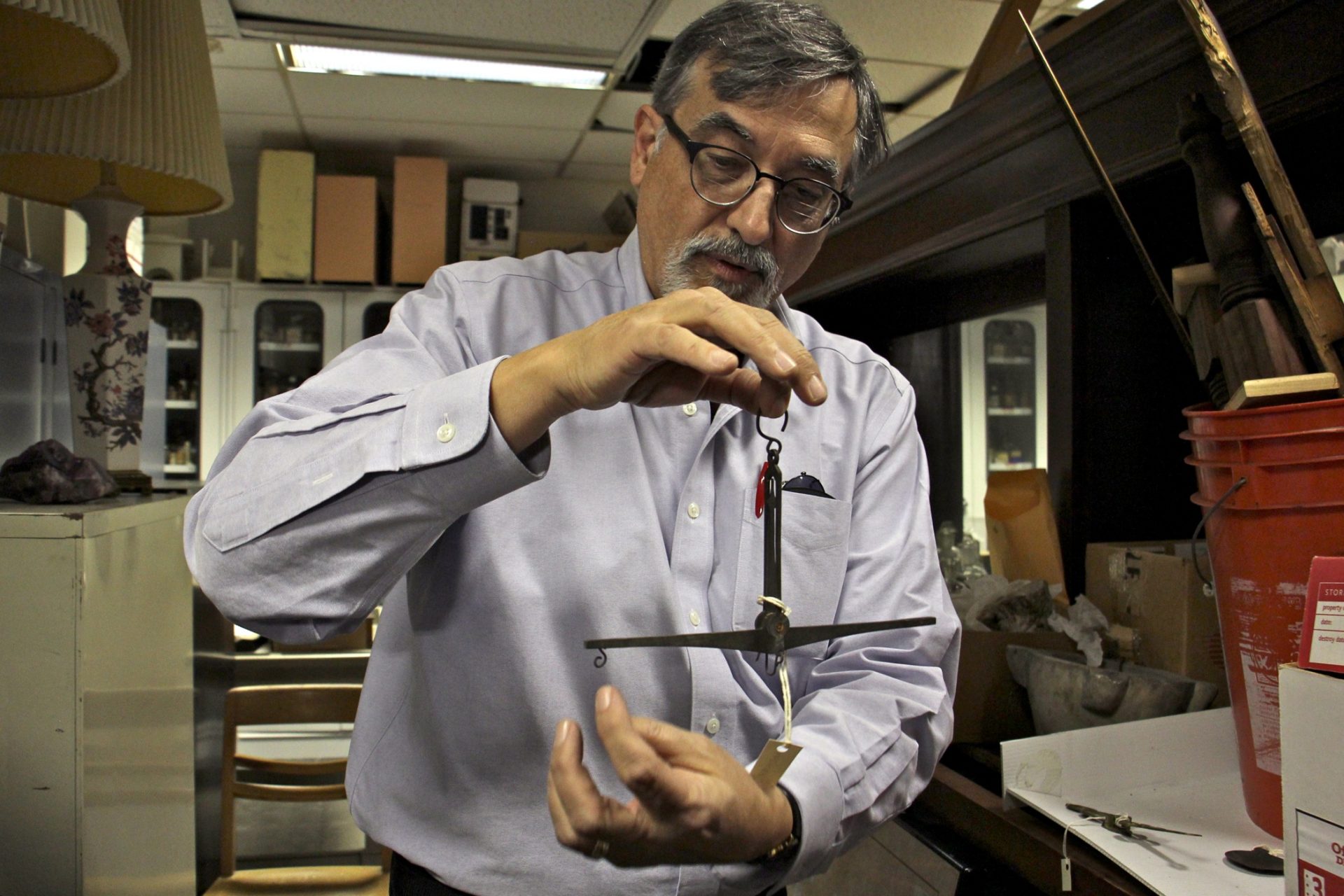
Emma Lee / WHYY
Pharmacy historian Greg Higby demonstrates the use of a hand scale found in a storeroom at the University of the Sciences. (Emma Lee/WHYY)
Higby came to West Philadelphia to poke through the university’s rare book archive, its collection of mortar and pestles believed to be the largest in the world, and its small museum of photos and documents related to the 19th century drug industry.
“This was the center of the drug trade in America,” he said. “Most of the wholesale trade was operated by Quakers with connections in London. They trusted each other. So much of this business runs on credit. Quakers had reputations of being honest.”
The pharmacy business in the early 19th century was fairly ragtag. One became an apothecary through apprenticeship; there was no standardized medical training. The Philadelphia College of Pharmacy established a professional bar for their industry.
The founders also wanted to establish a set of medicinal recipes. If a doctor prescribed Pott’s Sarsaparilla, Turlington’s Balsam of Life, Godfrey’s Cordial, or Daffy’s Elixir, they should be the same across all pharmacies.
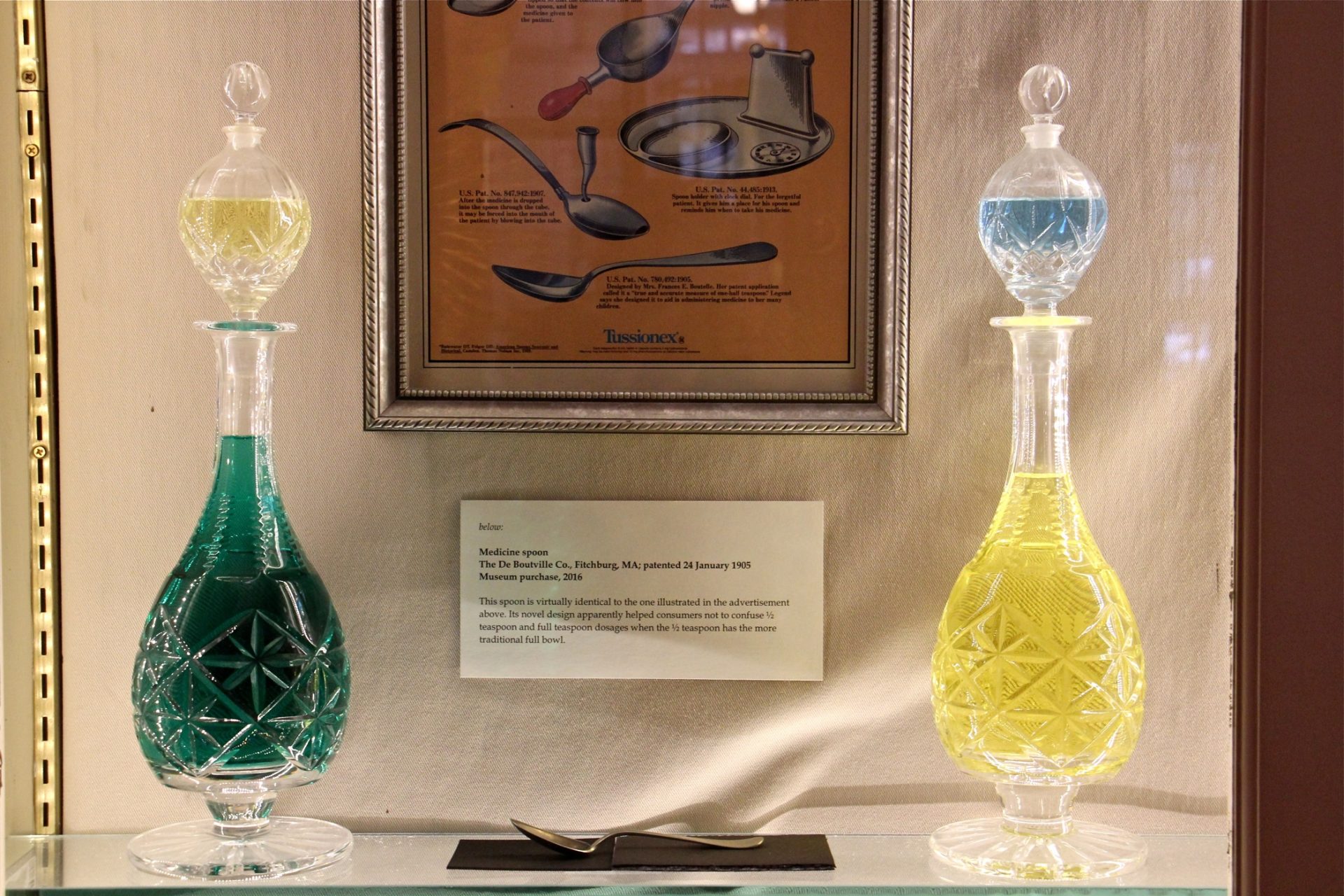
Emma Lee / WHYY
Two Art Deco show globes from the 1930s are displayed in the Marvin Samson Center for the History of the Sciences. Show globes, in use since the 17th century, marked the drugstore or apothecary in mush the same way as a red and white striped pole marked a barber’s shop. (Emma Lee/WHYY)
Higby discovered a set of small chapbooks in the university archive, with recipes for common medicines, like Dalby’s Carminative, a popular medication to relieve digestive discomfort.
“This is something you would take for an upset stomach. It has magnesium carbonate, potassium carbonate, things that are antacids, peppermint oil,” said Higby. “You know, people today treat themselves with peppermint tea.”
Further down the list is “tincture opii,” or opium.
“That and alcohol pretty much helped everything in the old days,” said Higby.
There are apothecary jars labeled “Spiritus Fermenti” (whiskey) and “Spiritum Vino” (brandy). Higby discovered prescription sheets for whiskey, issued by the federal government during Prohibition.
“Whiskey was an official drug in the U.S. during Prohibition. Physicians could prescribe medicinal whiskey, usually for wealthier patients,” he said. “This was abused, so the government started printing prescription blanks.”
Some items pre-date the College of Pharmacy by centuries. There is a copy of the “Pharmacopoeia Londinensis” from 1618.
The book of pharmacy recipes was initially flawed, so it was immediately pulled from publication to be revised and re-issued.
The first edition is one of only two known to exist, the other at the Royal College of Physicians in London. Before Higby saw it at the University of the Sciences, he believed there was only one known to exist.
“This is an extremely rare book. I didn’t realize it was here,” he said.
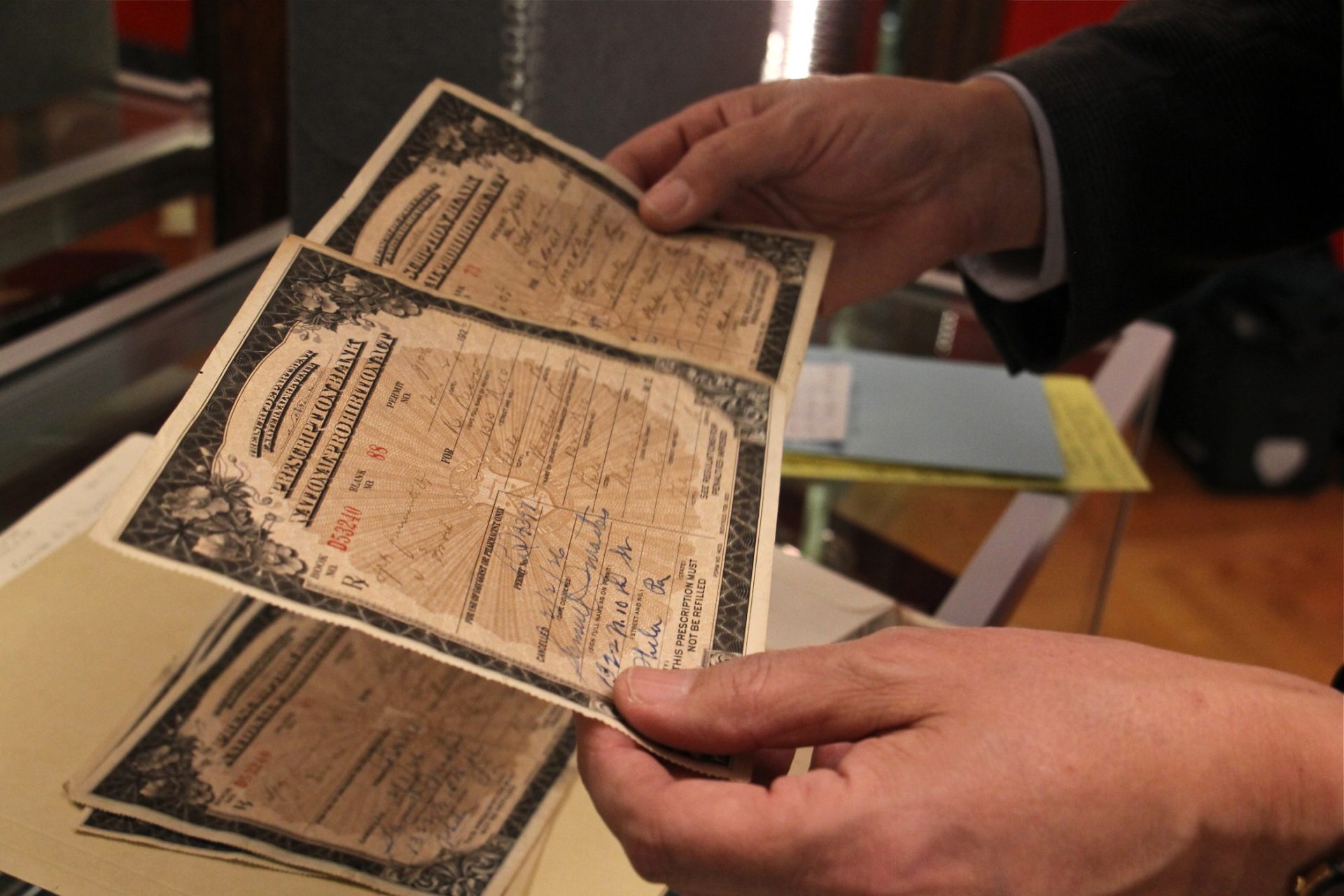
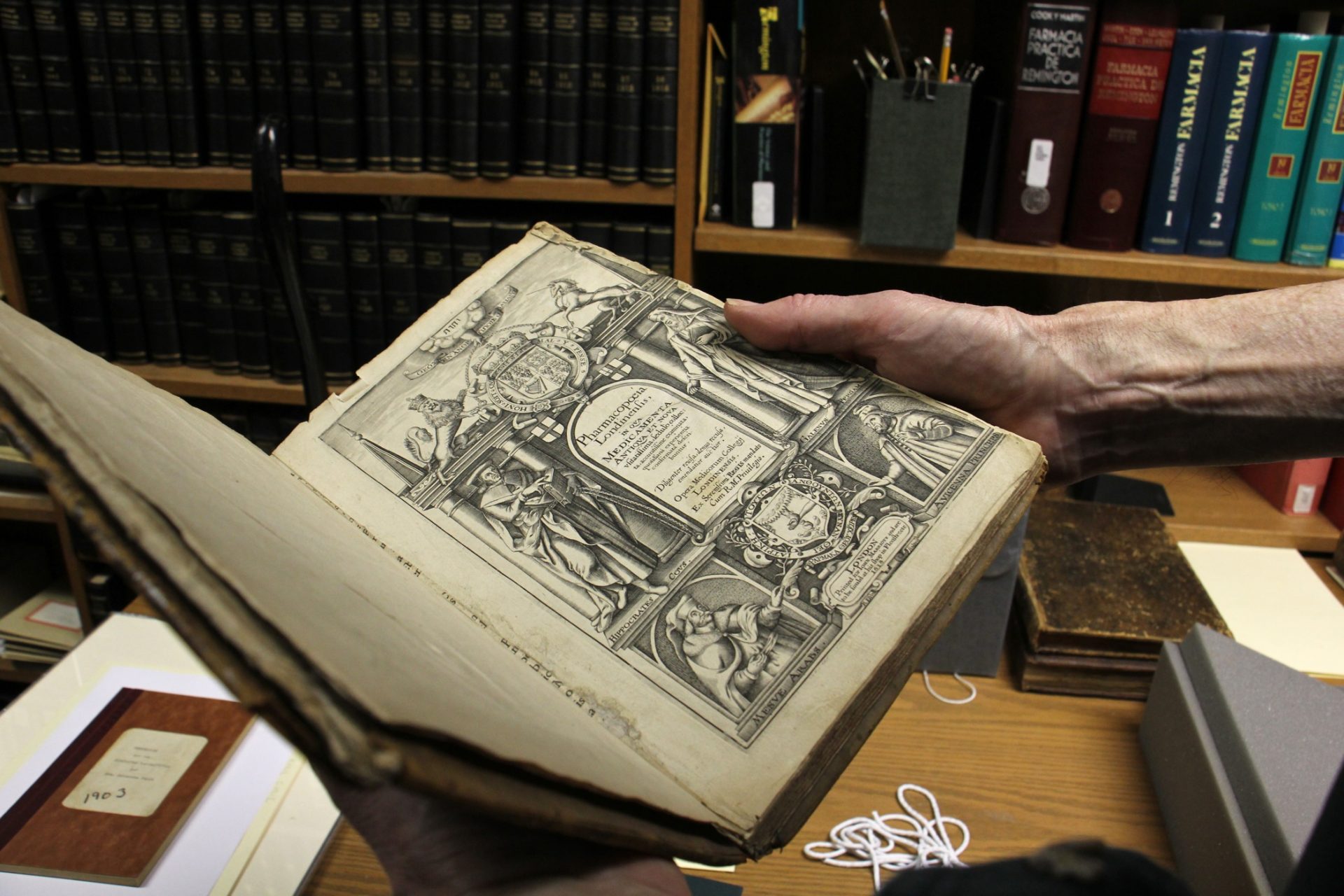
The book was controversial in its day. Published by the College of Physicians, the book is an encyclopedia of all the compounds that apothecaries were legally allowed to concoct in England. It gave the college considerable power to wield medical treatment.
It also ruffled feathers for featuring many chemical compounds. Most traditional apothecaries trafficked in botanical compounds derived from plants. Chemical drugs were not entirely trusted.
“It was too radical. It upset people,” said Higby. “They wanted to pull back and fewer chemical remedies, and more botanicals.”
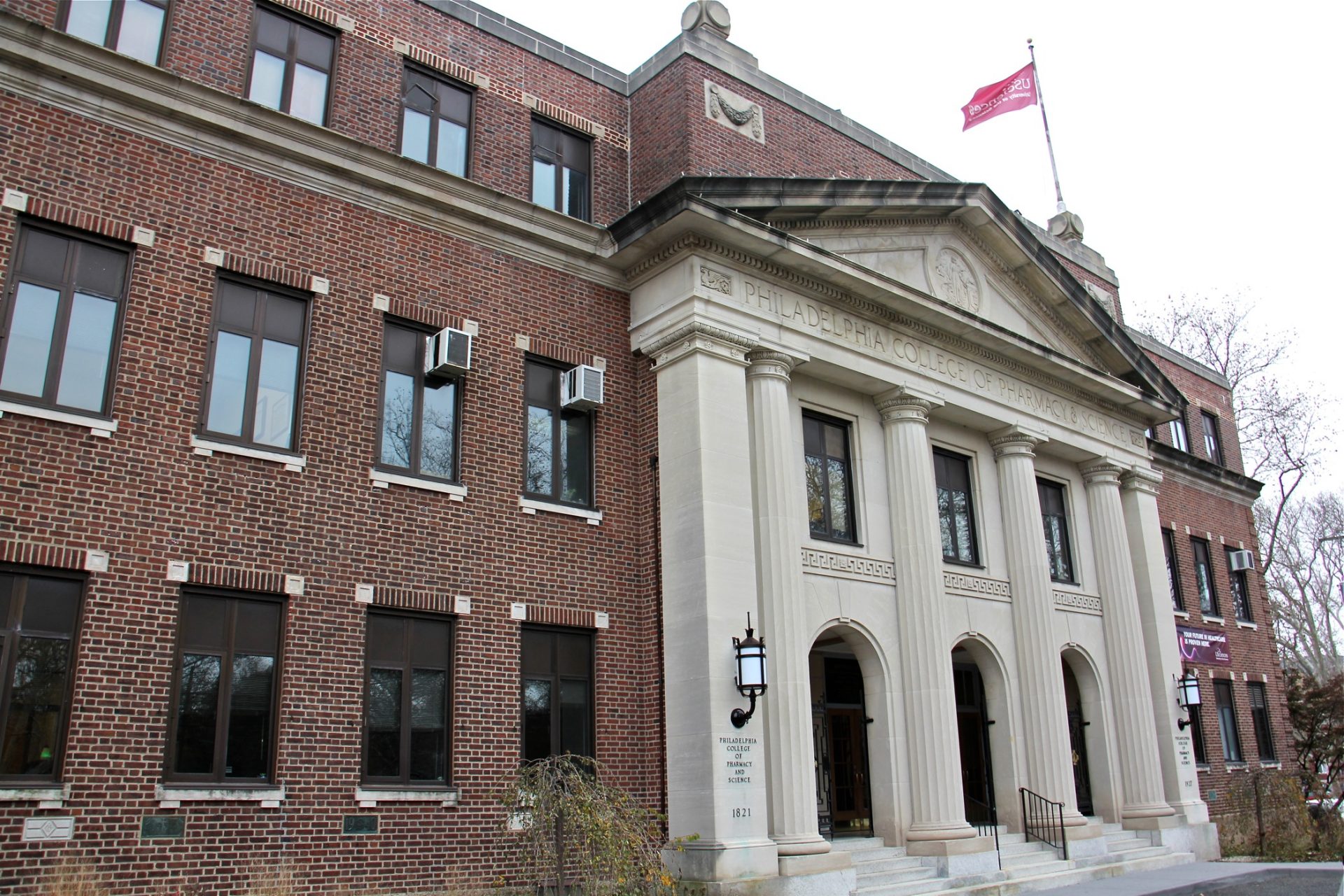
Emma Lee / WHYY
The Philadelphia College of Pharmacy and Science in Philadelphia, now called the University of the Sciences, is marking its 200th year. (Emma Lee/WHYY)
Higby was hired to find stories in the archive that would be told for the university’s bicentennial.
One of those stories might be: what’s old is new again.
One of the college’s prominent graduates was William Proctor, considered the father of American pharmacy and the author of the field’s first textbook in North America, “Practical Pharmacy.”
As a pharmacy student at the college he studied the medicinal properties of cannabis. That was in 1837. His paper is in the archive at the University of the Sciences.
WHYY is the leading public media station serving the Philadelphia region, including Delaware, South Jersey and Pennsylvania. This story originally appeared on WHYY.org.

Get insights into WITF’s newsroom and an invitation to join in the pursuit of trustworthy journalism.
The days of journalism’s one-way street of simply producing stories for the public have long been over. Now, it’s time to find better ways to interact with you and ensure we meet your high standards of what a credible media organization should be.